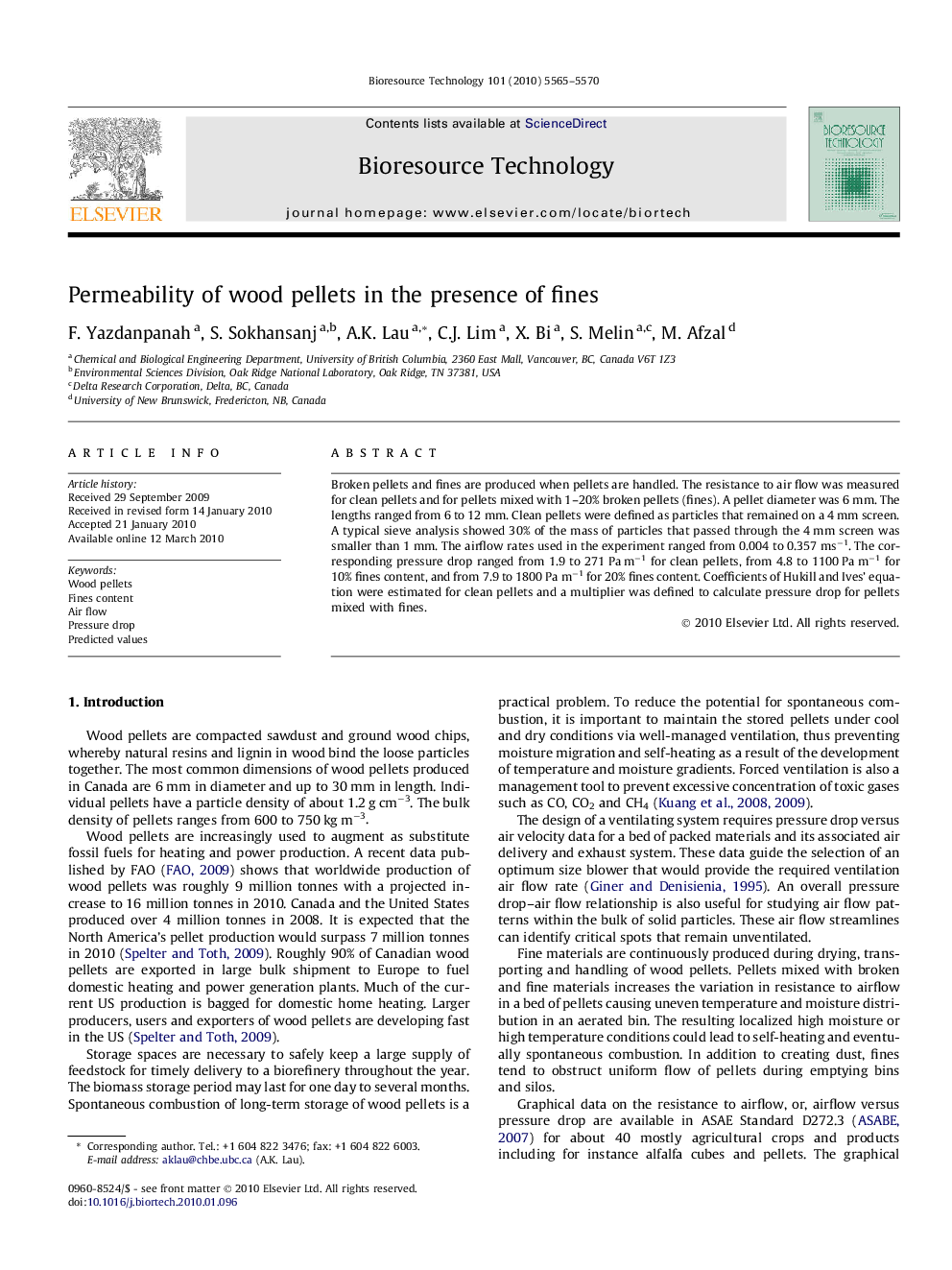| Article ID | Journal | Published Year | Pages | File Type |
|---|---|---|---|---|
| 682994 | Bioresource Technology | 2010 | 6 Pages |
Abstract
Broken pellets and fines are produced when pellets are handled. The resistance to air flow was measured for clean pellets and for pellets mixed with 1-20% broken pellets (fines). A pellet diameter was 6 mm. The lengths ranged from 6 to 12 mm. Clean pellets were defined as particles that remained on a 4 mm screen. A typical sieve analysis showed 30% of the mass of particles that passed through the 4 mm screen was smaller than 1 mm. The airflow rates used in the experiment ranged from 0.004 to 0.357 msâ1. The corresponding pressure drop ranged from 1.9 to 271 Pa mâ1 for clean pellets, from 4.8 to 1100 Pa mâ1 for 10% fines content, and from 7.9 to 1800 Pa mâ1 for 20% fines content. Coefficients of Hukill and Ives' equation were estimated for clean pellets and a multiplier was defined to calculate pressure drop for pellets mixed with fines.
Related Topics
Physical Sciences and Engineering
Chemical Engineering
Process Chemistry and Technology
Authors
F. Yazdanpanah, S. Sokhansanj, A.K. Lau, C.J. Lim, X. Bi, S. Melin, M. Afzal,
